Guest post by Heidi Cullen, MBARI, https://www.mbari.org/climate-change-ocean-threats/
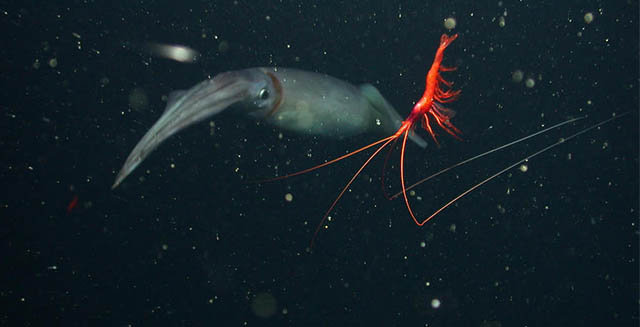
MBARI scientists have seen changes in deep-sea communities over the last three decades. For example, Humboldt squid (Dosidicus gigas) and sergestid shrimp populations appear to be shifting with climate change. Image © 2019 MBARI.
The ocean headlines these past few months have been unsettling.
“Feds declare emergency as gray whale deaths reach highest level in nearly 20 years” (May 31, Monterey County Herald)
“There are so many great whites at Santa Cruz beaches, locals are calling it ‘shark park’”(July 17, SFGate)
“‘Blob’ of warm Pacific water is back—could be trouble for marine life and weather” (Sept. 10, San Francisco Chronicle)
A just-released scientific report connects these and a host of other ocean changes with human activities that take place largely on land. The Intergovernmental Panel on Climate Change (IPCC) Special Report on the Ocean and Cryosphere in a Changing Climate marks the first time that the IPCC has written a stand-alone report on the marine realm. It presents a detailed account of the increasingly severe consequences of climate change for the ocean, its trillions of creatures, and, ultimately, ourselves.
The report makes clear that to protect the ocean, we must first reduce our dependence on fossil fuels. But we must also reduce ocean stresses caused by overfishing and pollution, so the ocean is healthy enough to weather the changes already underway.
“The bottom line is that we need the ocean. And right now, the ocean needs us,” said Julie Packard, executive director of the Aquarium. “It’s not too late to take courageous climate action and safeguard the ocean from further damage.”
Our liquid life-support system

The emerging footprint of human influence is increasingly clear—fossil fuel emissions are harming the ocean. Image: Todd Walsh © MBARI 2008.
Decades of scientific research have confirmed that human activities—including the use of fossil fuels, deforestation, and industrial agriculture—are causing climate change. This IPCC special report outlines the ways in which these activities, which release carbon dioxide and other heat-trapping gases into the atmosphere, imperil the ocean and everything it does for humankind.
The ocean, too often overlooked, provides life-sustaining services that make Earth habitable for us. The blue expanse that covers 70 percent of our planet’s surface produces roughly half of the oxygen we breathe and circulates heat and moisture around the globe, creating the regional weather patterns we depend on to grow our food. The ocean also provides humanity with one-sixth of the animal protein we eat, sustaining coastal communities around the world. In the United States alone, the ocean economy produces more than $280 billion a year in goods and services and supports almost 3 million jobs, including thousands right here in the Monterey Bay area.
Our emissions have raised the global average surface temperature by about 1°C (1.8°F) since the late 1800s. But it could be much worse. The ocean, so far, has absorbed more than 90 percent of the excess heat in the climate system since 1970 and about 25 percent of the carbon dioxide we’ve pumped into the atmosphere since 1870. Without the ocean to put the brakes on climate change, our planet would be roughly 11°C (20°F) warmer today, on average, than it’s been over the past century—in other words, largely uninhabitable by people.
Symptoms across the global ocean
The IPCC report details the triple threat of climate change to ocean ecosystems: warming, acidification, and deoxygenation.
The top 200 meters (656 feet) of the ocean have warmed roughly 0.6°C (1°F) since 1870. In 2018, the ocean had its warmest year on record—a trend that increases the likelihood of marine heat waves, harmful algal blooms, wildlife loss, more intense tropical storms, and coral bleaching.
Ocean acidification causes a depletion of carbonate ions, which are critical for shell-forming animals including corals, crabs, clams, oysters, and tiny free-swimming snails called pteropods.
At the same time, the open ocean is losing oxygen. The IPCC report estimates a loss of between 0.5 to 3.3 percent between 1970 and 2010 from the surface to 1,000 meters (0.6 miles). In addition, oxygen minimum zones are expanding, especially in tropical areas.
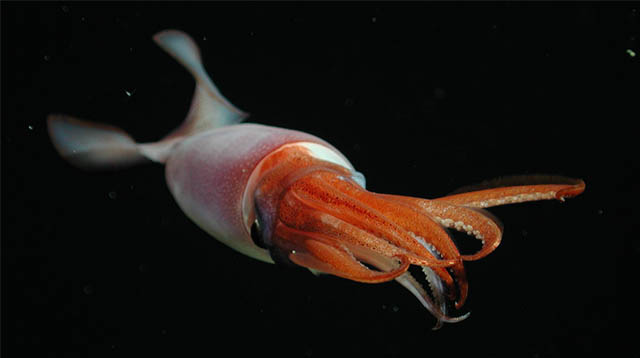
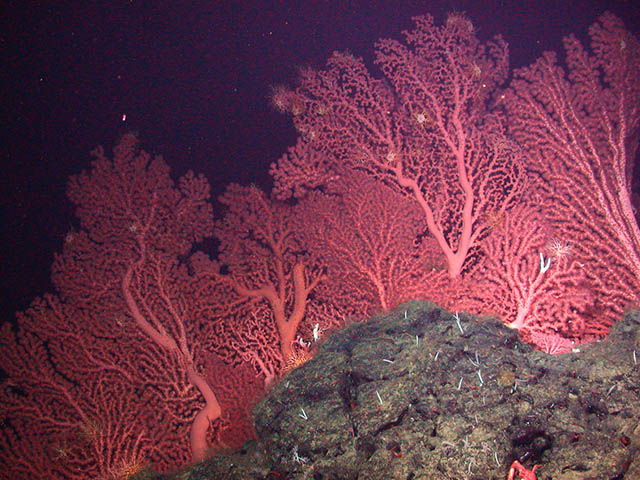
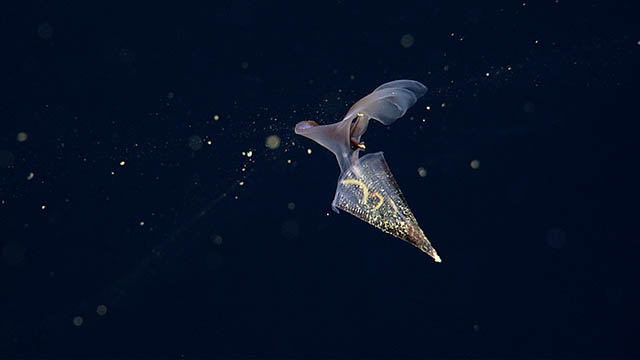
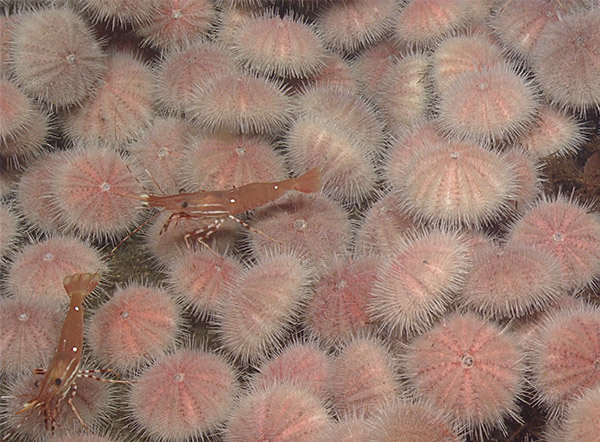
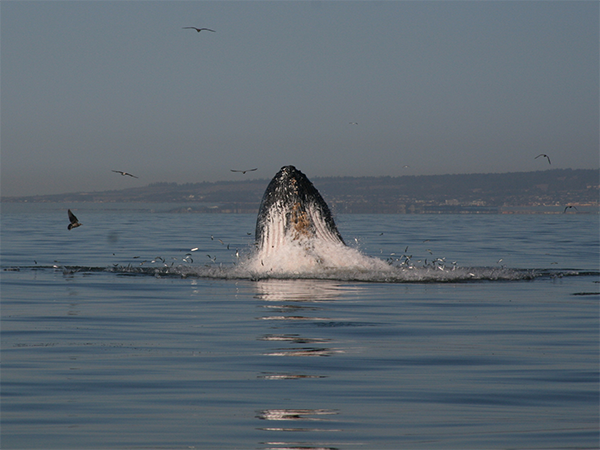
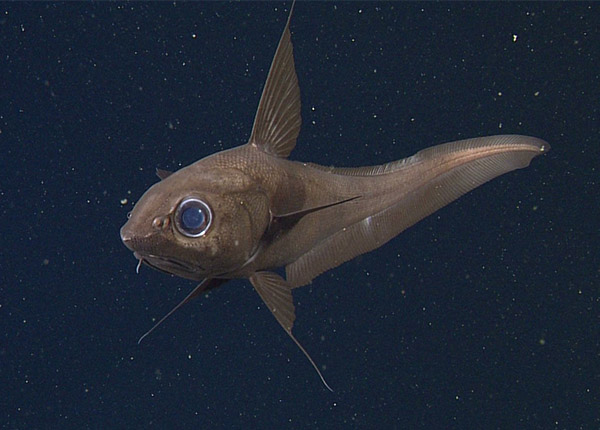
The impacts on Monterey Bay
Our beautiful blue backyard is not immune to climate change. It too is becoming warmer, more acidic, and depleted of oxygen. These changes put additional stress on marine wildlife, from zooplankton to whales.
The surface of Monterey Bay has warmed about 0.8°C (1.4°F) since 1930. This warming has been linked to large blooms of toxic algae—like the one that delayed the Dungeness crab fishing season in 2015. Warming has also prompted range shifts among invertebrates, like some species of snails and anemones, that live in the rocky intertidal areas of Monterey Bay. While there have been several strong El Niño events, including in 2015-16, that have warmed the surface waters off the West Coast of North America over the past 60 years, climate change is boosting these events and making the waters even warmer.
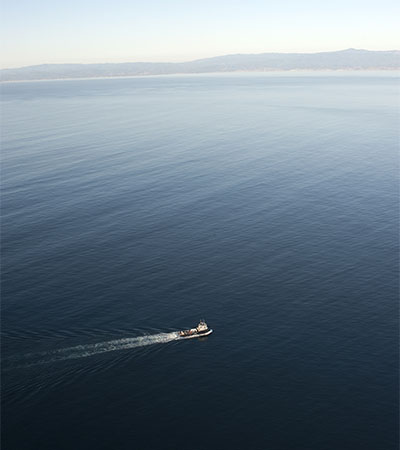
MBARI’s research vessel Rachel Carson cruises in Monterey Bay. Even our beautiful blue backyard is becoming warmer, more acidic, and depleted of oxygen. These changes put additional stress on our valuable marine ecosystems. Image: © 2014 MBARI.
Since industrialization, humans have increased atmospheric and surface oceanic carbon dioxide content by approximately 50 percent. Over the last 20 years, MBARI scientists have measured a roughly 2 parts per million per year increase in carbon dioxide in the surface waters of Monterey Bay—the same rate at which it’s been increasing in the atmosphere. In that same time period, the bay’s acidity has increased by about 10 percent. Recently a team of researchers from MBARI found that carbon dioxide and other pollution from traffic in Silicon Valley and agriculture in the Salinas Valley are changing the chemistry of Monterey Bay, likely making the water more acidic.
In addition, Monterey Bay’s oxygen minimum zone—where seawater oxygen levels are the lowest—is getting bigger. Animals that can tolerate low oxygen, like Humboldt squid, seem to be taking advantage of this development, while other animals, such as Sergestes shrimp, are being displaced. These changes, in turn, affect the marine food web and the health of our local fisheries. For example, increased ocean acidity has been shown to make some juvenile rockfish slower and less energetic—which makes it harder for them to escape predators and catch prey.
The ocean is slow to react to atmospheric changes, so even if we stopped emitting greenhouse gases tomorrow, ocean warming would persist for hundreds of years. That’s why it’s critical that we act now to prevent further stress on the ocean.
We know how to heal the ocean
The picture this new report paints is grim, but the good news is that the solutions are clear. We must take courageous action to slow the pace of climate change and protect our global ocean—starting now. In order to avoid the worst impacts, the IPCC advises, humanity should keep the planet’s average warming below 2°C relative to pre-industrial levels.
This requires getting net carbon dioxide emissions down to zero by mid-century. This may be the biggest, most ambitious and most important challenge modern society has ever faced.
Last year, at the Global Climate Action Summit in San Francisco, the Monterey Bay Aquarium, and allied organizations presented the Ocean-Climate Action Agenda, which outlined the critical steps forward, including: protecting and restoring coastal wetlands, establishing and effectively managing marine protected areas, and improving the sustainability of fisheries and aquaculture.
At a broad scale, we need to rapidly shift our energy infrastructure to replace fossil fuels with renewable energy sources like solar and wind, developed both on land and in the ocean. We also must conserve our forests and transition to low-emission transportation and agriculture.
At an individual level, each of us can make a difference, too. To reduce our carbon footprints, we can prevent food waste and eat less meat, use energy more efficiently, and fly less often. To support ocean resilience, we can choose sustainable seafood and avoid single-use plastic.
“It’s time to double down on our investment in ocean and climate research, technology, and conservation,” said Chris Scholin, president and CEO of MBARI. “We are in a race to explore and understand our ocean as it undergoes massive change as a result of human activity. The sooner we act, the healthier our ocean will be.”
By Heidi Cullen, MBARI, https://www.mbari.org/climate-change-ocean-threats/
For additional information or images relating to this article, please contact: Kim Fulton-Bennett
831-775-1835, kfb@mbari.org
















